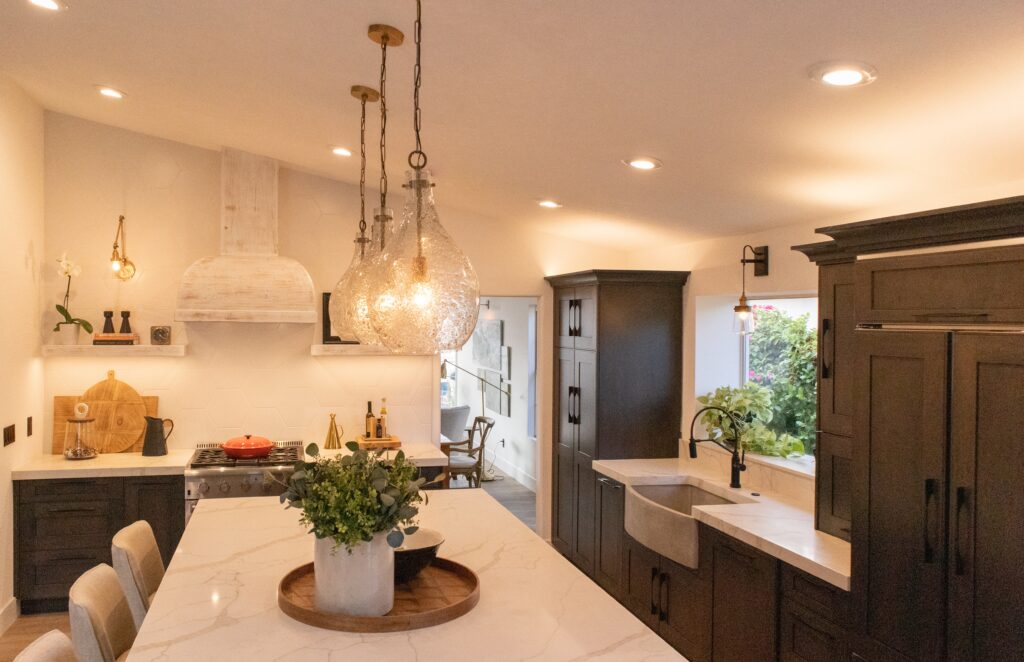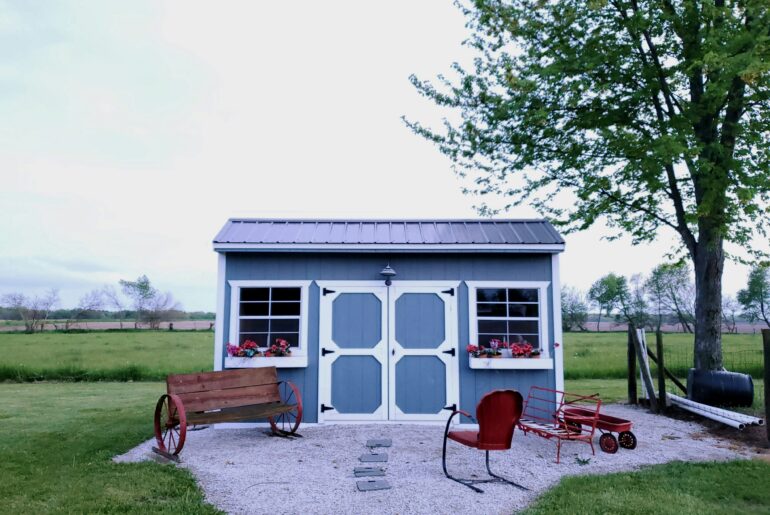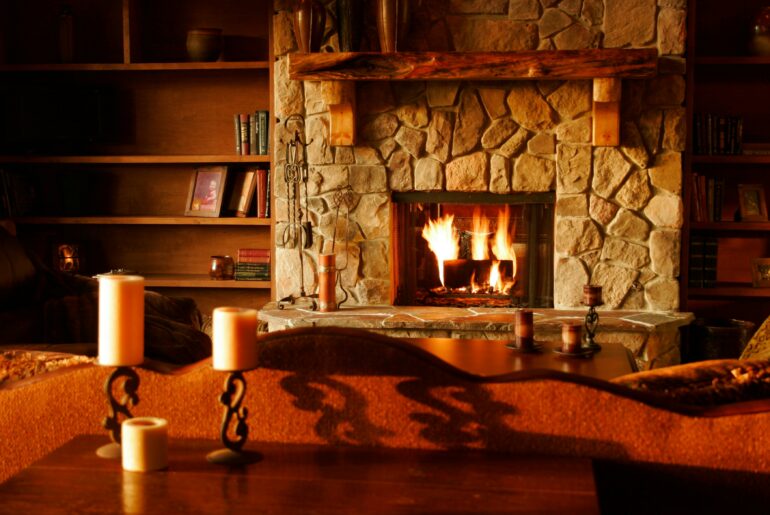Recessed, or ‘can’ lighting, has been providing that sleek, modern look to ceilings for decades and it looks like it is here to stay.
Older fixtures are becoming vintage and chic, but they were not designed to be energy-efficient, and can be difficult to insulate around. Newer designs, low-temperature LED technology, and airtight housings are much better at keeping bills low, but we can’t all afford to upgrade every light fixture.
So what are the benefits of recessed can lighting, and how can you protect your home from heat loss and get a hold of those fuel bills?
Whether you are renovating, or building new, here’s our guide to insulating around recessed lighting the professional way.
The Problem With Recessed Can Lighting
The Pennsylvania Housing Research Center carried out a study into energy loss through recessed lighting and concluded that an average uninsulated recessed light fixture could add an estimated $35 to annual energy bills.
The typical American kitchen will have a half dozen of these light fixtures and some homes may have thirty, forty, or perhaps more. It’s worth taking a cold, hard look at your lighting to see where it could be costing you money.
Say Goodbye to Incandescent Light Bulbs
If you have older-style recessed lighting, it was designed to use incandescent bulbs (and perhaps still does). Incandescent bulbs were banned from sale in the US as of August 1st, 2023 in an effort to phase out their use.
Chances are there might still be one or two on the shelves of that little Mom and Pop hardware store, but it’s time to change up to LED bulbs now.
LED bulbs convert over 80% of the energy they consume into light, which makes them cooler. As a result, your light fixtures are safer. Plus they last longer, so you are less likely to have the odd dark spot in the house.
More Heat Than Light?
Excessive heat degrades light fixtures and electrical wiring, so this change will extend the life of your lighting circuit too.
If old-style incandescent fixtures came in contact with attic insulation, say four inches or so of fiberglass, or blown cellulose, then there would be a real danger that the fixture would overheat.
At best the circuit breaker or temperature control would break the circuit but there could be a risk of fire.
How Hot is Too Hot?
In test conditions, a 70-watt incandescent bulb can get as hot as 360°F. Your circuit breaker should trip under normal conditions before the bulb, or the fixture, can get anywhere near such a high temperature.
The Stack, or Chimney Effect
The heat produced by these bulbs draws warm air upward and through the fixture in a chimney effect on cold days, making your heating system work a bit harder to keep your home at a comfortable temperature.
More modern lighting is better designed, but proper separation between the insulation and light fixtures should be ensured to prevent any fixtures from overheating.
While LEDs are cooler, they do still produce heat, and the light fixtures will warm up.
Air Seal as Part of The Deal
Preventing the transfer of warm air to colder spaces is why we insulate and air-seal. Older light fixtures were designed with the cooling of the fixture in mind. It was part of the solution to the heat generated by incandescent bulbs.
Older style can lights will be full of slots to let air out of the fixture and into the space above. This space might be between floors, or visible from the attic. Often you will be able to spot the lights from inside the attic, if they are on, due to the light visible through the vents.
Recessed lighting can warm up a conditioned attic space, or send heat out through your roof, causing issues such as ice dams in the winter, especially in cooler climates. In warmer climate zones attics can get hot enough as it is, so if you have recessed light fixtures, get them air-sealed.
How To Tell if a Light fixture Is Not Air-sealed
If air can pass freely through your recessed light fixtures, then be assured that bugs, spiders, and dirty air can also pass by. There may be a dark area adjacent to an old light fixture that might look like a burn, but it is most likely simply dust drawn in through the fixture and staining your ceiling.
Today, modern technology has created effective ways to measure the energy efficiency of a building. These include using a door blower system to test air sealing in residential homes.
In Florida, a door blower test has been mandatory for all new builds since 2017. It simulates the effect of a 20mph wind blowing on all four walls of a house.
One area that consistently fails in these tests is ceiling lighting. Can lights will draw in a significant amount of air, and in Florida, this can be significantly warm, humid air too.
What Can I Do About My Recessed Can Lighting?
Changing the bulbs to more efficient LEDs is only part of the story. To really make a difference you need to get up into the attic and fix the problem.
What Are the Options?
If you are starting from scratch, then specifying IC-rated lighting for anywhere your can lights might come into contact with insulation is one answer.
Building codes now specify that any light fixture that intrudes into the thermal envelope of a new building should be air-sealed and IC-rated.
IC-rating literally stands for ‘insulation contact,’ which allows for insulation to come into contact with the fixture. Even so, while IC-rated fixtures do have protected fail-safe features, separation from direct contact with insulation is always desirable if possible to aid future maintenance access if nothing else.
IC-Rated Direct Contact Design
IC-rated recessed lighting is designed to cope with direct contact with insulation in your wall or attic without the risk of overheating.
Thermal protection is designed such that should the temperature of the fixture approach an unsafe level, then it will automatically shut itself off.
IC-rated lighting also requires less clear space around them, so they are ideal for squeezing into tight spots where that additional lighting is needed.
Safety is a big part of the reason for choosing lighting with the correct rating on any project, and IC-rated fixtures should be selected wherever a space will require insulation.
If you can afford to swap out your old light fixtures for new, IC-rated alternatives, then it would be preferable to do so.
How To Insulate Non-IC-Rated Recessed, Can Light fixtures
Whether you are replacing your incandescent bulbs with LEDs, or installing new fixtures that are not rated, there are a number of ways that you can keep the fixtures separated from the wall or attic insulation.
Light covers are available from many big box retailers. Simply fit them over the top of the light fixture, sealed with a heat-resistant silicone, mastic, or low-rise spray foam product.
Ensure they are large enough to afford the right amount of clearance and designed for the task.
Don’t be tempted to use plastic flowerpots. They may look similar to light covers, but they will not stand up to prolonged exposure to heat and may weaken and collapse.
The Tenmat style of light covers are made from mineral wool, a material that has already been heated to 2000°F, so you can imagine how hot it would have to get to catch fire.
Budget-Friendly Insulated Light Cover Alternatives
If you are on a budget, then it is possible to make your own light covers, either from insulating material such as foam board, or drywall, which, at a half-inch of thickness, is fire rated to half an hour.
A half-inch, foil-faced, foam board is perfectly adequate for making light covers for your can lights.
- Cut out five squares 12” by 12” and tape them together with aluminum tape to form a box.
- You can use a low-rise spray foam as an adhesive on the inside of the box to aid air sealing.
- From one 8’ x 4’ sheet, you will be able to make six light covers and have two squares left over for any custom cuts you need to make.
- Use a box cutter to make cut-outs for electrical conduits and fixtures and seal to the drywall with heat-resistant mastic or low-rise spray foam.
Pros and Cons of DIY Covers
The advantages of making your own covers are:
- They can be made to fit the specific light location.
- They can be made from material such as drywall that you already have on-site.
- You can save money. Light covers can cost up to $30 to $40 each, so whether you need a half dozen, or the number runs into double figures, that’s going to take a chunk off your budget.
The disadvantages of making your own covers are:
- DIY covers are not guaranteed and may not be accepted by your home insurance company.
- They may not be robust enough for the insulation system that you want to use if not specified by the manufacturer.
- Making your own light covers will take time, especially if there are a large number of light fixtures to protect.
Tips For Insulating Around Recessed Can Lights
Another good reason to fit lighting covers over your can lights is to protect them from the insulation installation, but the covers must be robust and fixed firmly.
Spray foam expands to several times its size, and while contact with an IC-rated fixture is not normally a problem, there is the potential for spray foam to push a light fixture out of alignment.
Blown-in insulation buries everything. If your recessed can lights have a cover over them then they will be easier to find should they require maintenance in the future. Attach a rod, or a bamboo stick, that stands up above the cellulose or fiberglass insulation to make rediscovery easier.
Ensuring the attic floor insulation is continuous is important. This means that if your light covers stand up above the surrounding insulation, that you should insulate them too.
What Insulation Can I Use Around Recessed, Can Lights?
As long as you have installed the correct clearance for non-IC-rated fixtures, there is no formal restriction on which insulation you can use in your attic. However, you will be required to install a minimum R value of insulation in some form.
It is always a good idea to check the manufacturer’s recommendations when choosing light fixtures in case of warranty issues. They may prefer one insulation over another i.e. a highly fire-retardant mineral wool, over a less fire-retardant material.
For IC-rated fixtures, it would probably be unwise to use any kind of spray foam without additional protective covers due to its adhesive properties, which could cause problems should you need to change the fixture in the future.
Tips For Insulating Around Can Lights
Modern can lights will usually come with a rubberized seal that closes the gap between the fixture and the drywall, making them airtight.
- To improve the air seal for older fixtures, use a heat-resistant caulk to seal between the fixture and the drywall beneath the trim.
- Do not close up the vents on an old can light fixture, even if you are replacing the bulbs with low-energy alternatives.
- It is not advisable to attach, or glue, insulation directly onto any light-fixture, even if it is IC-rated.
- Do not let PVC wiring come into contact with polyethylene insulation as it will leach out chemicals that keep the cable flexible. Always put cabling into a conduit or other form of protection.
- If using EXP or Styrofoam foam boards to create light covers, always use foil-faced boards with the foil facing the fixture if using one-sided board.
- Whether you use low-rise spray foam or heat-resistant caulk to attach a light cover to the attic floor, it does not matter as much as the competence of the seal. Either should be difficult to remove in the event of maintenance.
- Always make the light cover discoverable after insulating around can lights so that they can be accessed in the future. This way they are not accidentally damaged when attending to other maintenance or survey tasks in the attic space.
If you are using a contractor to install insulation in an attic, or wall space that has recessed can lighting installed, always ask them what their plan is to protect the can lights, and make sure it is itemized on the invoice too.
Non-IC-Rated Minimum Clearance Requirements
Not all light fixtures are required to have an IC-rating. Many don’t need it as they are not likely to come into contact with insulation if they are surface-fixed or hanging lights.
Non-IC-rated recessed, can fixtures will have a label, or instructions with them that detail the minimum clearance required around them. Typically, this will be no less than 3”.
The advantage of non-rated fixtures is that they will cost less to buy, which might be a factor if you have a lot of lighting on your shopping list.
Apart from being more budget-friendly, non-IC-rated lights tend to come in a much wider range of designs too, giving you a broader choice of finished look to your home space.
If you are looking for a specific trim, or finish, then you can still use a non-IC-rated light fixture, but you will need to purchase a cover to separate and seal the fixture off from the surrounding insulation.
How Do I Tell IC-rated and Non-IC-rated Recessed Can Lighting Apart?
Existing cans will have a label inside the fixture. Older fixtures may have scorched the printing making it hard to read, but the simplest ways to check are as follows:
Are there slots, or round holes in the cans? If so, then it is likely that these are older-style, non-IC-rated fixtures.
If there are no gaps in the housing, and the can is much larger on the outside than it is on the inside, then it is probably ‘double-canned’, with a thermal break between the inner part of the fixture and the outer. This is likely to be an IC-rated fixture.
If you are still unsure then take a look in the attic. An IC-rated fixture will be silver, while the housing for a non-IC-rated fixture will be white.
Can I Convert My Old Fixtures to New LED?
The best thing to do is, of course, to upgrade the entire fixture, but this is sometimes just not practical in some situations.
In this case, manufacturers have made it a relatively straightforward task to change over old for new. Indeed, a trip to the local big box supermarket might be all you need to do to pick up everything you require to make the change.
Sunco Lighting makes a 12-pack conversion kit available for less than $100, and all you need is a screwdriver and a safe pair of steps to do the work. Designed to clip into any existing 6” recessed can lights, they are guaranteed for 7 years, while they claim the LED bulbs should be good for more than 30.
E26 adapters are included but TP24 connectors and the bulbs are sold separately.
So, updating your existing incandescent can lights is within reach of most competent DIY enthusiasts. However, if you are unsure, not confident of handling electrical work, or working at height it is always advisable to contact a qualified electrician.
What Are ICAT Light fixtures?
ICAT fixtures are the latest innovation and the most efficient recessed can lighting on the market at the moment.
ICAT (insulated ceiling air-tight) fixtures won’t need a protective cover unless you are using spray foam. The outer skin of the can remains cool at all times, completely eliminating any fire risk in the attic space.
The airtight seal made to the drywall also ensures that there are no air leaks whatsoever between the conditioned interior of the living space and any area beyond the thermal envelope of the house.





